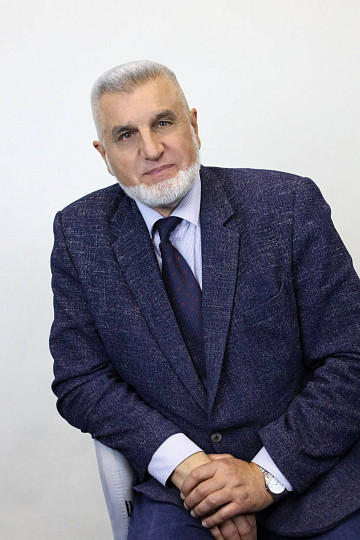Professor Sergei Snigirev from Altai State University proposed measures to restore the population of hares in Altai Krai
 On February 13, a round table was held in the Altai Regional Legislative Assembly on the topic “On the conservation of hunting resources in Altai Krai.” Sergei Snigirev, Doctor of Biological Sciences, Professor, Director of the Zoological Center of the Institute of Biology and Biotechnology of Altai State University acted as an expert and made a number of proposals aimed at stabilizing the population of hares in the region.
On February 13, a round table was held in the Altai Regional Legislative Assembly on the topic “On the conservation of hunting resources in Altai Krai.” Sergei Snigirev, Doctor of Biological Sciences, Professor, Director of the Zoological Center of the Institute of Biology and Biotechnology of Altai State University acted as an expert and made a number of proposals aimed at stabilizing the population of hares in the region.
The reason for the round table was numerous appeals from hunters to the Committee on Agrarian Policy, Nature Management and Ecology of the Altai Regional Legislative Assembly in connection with the decrease in the number of hares in the hunting farms of the region.
Professor of Altai State University Sergei Snigirev presented a scientific justification for the need to take measures to improve this situation and made a number of specific proposals to increase the population of this species.
Two species of hares inhabit the territory of Altai Krai: the brown hare and the white hare. The white hare is more widespread, and the brown hare was introduced to the region in the 1930s and 1940s as part of acclimatization efforts in Siberia, particularly in the Omsk, Novosibirsk, Kemerovo, Tomsk, Irkutsk, Chita Oblasts, Altai, Krasnoyarsk Krais, and Kazakhstan.
Along with waterfowl, hares are the most popular target for amateur sport hunting, and were previously hunted for commercial purposes as well, with both their skins and meat being harvested. Since 1997, the number of white hare in the region has decreased by more than 2.5 times and has remained stably at a low level. One of the reasons for population depression is the intensification of agro-industrial production and hunting activities.
“The great hunting and economic importance of these species and the widespread decline in the number of the mountain hare require the adoption of a set of measures to increase the efficiency of biotechnical measures, regulate the volume of animal production and optimize the timing of hunting. The almost complete lack of information on the biology and ecology of these animals in Altai Krai has determined the relevance of this issue,” says Sergei Snigirev.
The professor gave a description of the biological species, highligting that the distribution of hares within their habitat is uneven. In the south of Western Siberia, these animals tend to favor birch groves and thickets of tall, dense grass, and are often found near populated areas.
“Favorable conditions and, accordingly, a high number of animals were observed in willow birch forests, aspen forests and sedge birch forests. In the first of them, the average density is 18.6 individuals per 1000 hectares, with extreme values from 12.5 to 24.7 individuals. In aspen stakes, the average density is almost 2 times lower – 14.9 individuals. Sedge birch forests, just like previous biotopes, provide the hare with the necessary conditions for existence in winter. In this regard, the average density was 14.8 individuals per counting area,” the scientist notes.
Males of both species are less cautious and are more frequently hunted in the first half of the hunting season. An increase in the proportion of hunted females signals the need to stop hunting in a given hunting area in order to preserve the population reproduction potential.
Sergey Snigirev made a number of proposals to stabilize the number of white hare and brown hare: reducing the volume of production; cancellation of early autumn hunting in October to avoid the killing of hares; strengthening control over the use of snowmobiles.
“In the forest-steppe zone of Western Siberia, the decline in the mountain hare population is attributed to the massive use of chemicals in agricultural practices. Reports indicate mass deaths of bees and representatives of the hunting fauna such as grouse, gray partridge, hares, and roe deer in hunting farms located in areas of intensive agriculture. The consumption of treated seeds, granular fertilizers, and watering from open reservoirs by these animals not only leads to their mortality, but also diminishes the reproductive potential and viability of young individuals. The technology of machine harvesting of agricultural crops is being violated everywhere, leading to the death of animals. It is necessary to regulate this process,” notes Sergei Snigirev.
One of the main proposals was to restrict the hunting season for white hare and brown hare from November 1 to January 14. Additionally, he suggested granting the exclusive hunting right for white hare and brown hare only to owners of hounds possessing a field diploma in white hare hunting.
All of Sergei Snigirev's proposals were endorsed by the participants of the round table discussion. The professor was instructed to prepare a scientific justification for making changes to the hunting dates and proposals to increase the number of this species, after which they will be sent to the Russian Ministry of Natural Resources.